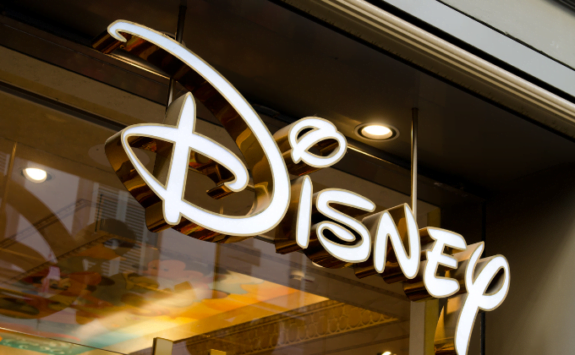
This blog post about the 7 essential types of supplemental repertoire for piano students was written by Amanda Shaw. Amanda lives with her family on a little island near Montreal, Quebec. She’s a homegrown teacher who loves to share her passions with others. When she’s not homeschooling her own kids, she’s teaching piano, English literature or ESL. The most heard phrase in her studio (and the one which elicits the most giggles and groans from her students) is, “Play it again!“
Breaking up routines and supplementing your students’ method book with additional solo pieces is essential for any well-rounded education. With seemingly endless lists of piano compositions available at every level, how do you choose supplemental repertoire for your piano students?

Method books these days are so thorough that it can be easy to think they’re complete. After all, your students are methodically working their way through folk songs, classical arrangements and jazzy tunes while gradually building their skills.
But it’s important to have students experience repertoire from a wide variety of sources, not just the music from the perspective of their particular method. I like to call these supplemental compositions ‘challenge pieces’. They’re new, they’re exciting and they add something for us to talk about during lessons.
I especially love to hand-pick selections to match my students’ interests. We all have that one student who can’t stop talking about Ancient Egypt or who comes to every lesson dressed in glitter and a superhero costume. Wouldn’t they love an arrangement of Rameau’s L’Égyptienne or a whimsical fairy waltz?
When rounding out a student’s repertoire, though, we should also make sure that we’re providing the must-haves with a good variety of compositions.
7 Piano Repertoire Essentials
Having piano repertoire at hand – whenever you need it for wherever your student is on their journey – will save you a lot of planning time as well as stress.
So, what is essential repertoire?
These are the 7 categories of pieces that I believe should be in every student’s repertoire.
No. 1: A Classical Piece
Number one is going to have to be a classical piece – but I use the term loosely.
Depending on the student’s musical ability and interest, you could choose anything from the Baroque, Classical or Romantic eras.
This is the repertoire that people first think of when they think about the piano. Sure, this can be the stereotypical kind of piano music, but these pieces have stood the test of time for a reason and they’ll be appreciated for years to come.
Having one or two classical pieces in piano students’ on-demand supplemental repertoire will always be an asset.
Bach, Beethoven Or Schubert?
Classical pieces are the perfect way to work on expression and technique with your students. These are some of my favourites:
- Beethoven’s Moonlight Sonata or Für Elise
- Mozart’s Minuet No. 1
- Pachelbel’s Canon in D
- Bach’s Toccata and Fugue in D Minor
- Haydn’s Andante from Surprise Symphony
Introducing my students to on-level arrangements of classical pieces often makes them feel like ‘real’ pianists. They associate these pieces with master pianists and are generally very proud to play them.
No. 2: A Crowd-Pleaser
I’ll never forget one particular high school talent show I attended that included two pianists. One was technically superior and had written and performed his original composition. The other played a mediocre rendition of Elton John’s Your Song.

Can you guess which one came out ahead when the awards were given out?
Show Tunes, Theme Songs, Greatest Hits and More…
Not everyone’s a musician, but everyone connects with music. Some songs lend themselves to connecting with bigger audiences, pulling at the heartstrings and providing huge nostalgia value.
Having a crowd-pleaser in your student’s repertoire is an easy way for them to connect with their audience, no matter who that audience may be.
Here are some that are greatly appreciated by my students and their families:
- Leonard Cohen’s Hallelujah
- John Williams’ The Imperial March or Welcome to Jurassic Park
- Klaus Badelt’s He’s a Pirate
- John Lennon’s Imagine
No. 3: Mood Music
Imagine this scenario: Your student is attending a wedding reception or their grandparents’ retirement party. There’s a piano in the reception hall, and their family encourages them to sit down and play while the guests are mingling.
Wouldn’t it be great if they had a piece or two of background music up their sleeve?
Not Elevator Music…
What we’re aiming for here is something non-intrusive – something that adds to the festive atmosphere without being the centre of attention. For students who are comfortable with chord progressions and improvising, this is a breeze! But some students find that terrifying.

I suggest helping them work on their memorization skills with a piece or two which might warm them up to improvising in the future.
Here are some great mood music examples:
- Bach’s Sheep May Safely Graze
- Grieg’s Morning Mood
- Vivaldi’s Spring
- James Hook’s Minuet
- Offenbach’s Barcarolle
Pro tip: Andrea Dow has some very simple, beautiful arrangements which fit the bill.
No. 4: A Different Genre
Time to switch it up! For the student who typically sticks to classical or traditional pieces, try picking a jazz tune, a blues number or a modern piece. These pieces help us break outside our comfort zone and work on different sounds and rhythms.
A good method book will often include these, so it’s not always necessary to go looking for new repertoire. Just make sure your students are exposed to different genres in some shape or form.
Hitting the Sweet Spot
Puzzled over which jazz or blues hits your students would enjoy and also be capable of playing? These are some of my favourite easy arrangements:
- Blue Scales from Alfred’s Basic Piano Library Lesson Book Complete, Levels 2 & 3
- Good Morning Blues from Bastien Piano for Adults, Book 2
- Spencer Williams’ Basin Street Blues
- Thelonious Monk’s Round Midnight
Of course, if you’re a member of Vibrant Music Teaching, look no further than the VMT Library. Nicola has a jazz game, an improvising activity and even a group workshop plan tailored and ready for you to explore the blues with your students.
No. 5: A Sing-Along
What fun it is to play while people sing along! But perhaps not – if your student hasn’t had any practice doing it.

Equip your piano students with a supplemental piece or two in their repertoire that will gather people around to enjoy a good sing-along.
Disney Ballads and Campfire Songs
What do these have in common? Most people spontaneously break out into song when they hear these tunes. Here are some sure-fire favourites to get your students smiling:
- Let it Go (from Frozen)
- My Heart Will Go On (from Titanic)
- How Far I’ll Go (from Moana)
- On Top of Old Smoky
- She’ll Be Coming ‘Round the Mountain
Some of my students also appreciate learning hymns like Amazing Grace.
No. 6: A Dramatic Piece
When it’s time for a solo, your student can keep the audience’s attention with a dramatic piece. Whether classical or modern, these pieces can showcase a more advanced student’s skills.
Even late beginner or intermediate students can have fun with an on-point arrangement of a striking composition.
Dramatic pieces tend to be crowd-pleasers, too. They grab the listener’s attention and keep it.
Encourage your students to perform with gusto and to take a dramatic bow at the end. They’re sure to get a standing ovation!
- Bach’s Toccata and Fugue in D Minor
- Grieg’s In the Hall of the Mountain King
- Beethoven’s Symphony No. 5
No. 7: A Duet or Ensemble Piece
Besides developing important rhythmic, listening and sight reading skills, playing a duet or ensemble piece is just plain fun!
In my “Piano Band” classes I like to have two kids per keyboard, a few on xylophone and others on percussion instruments.
If you don’t have regular group classes or buddy lessons, you can easily play duets with your students or give separate parts to siblings.
Go Slowly
It can be challenging to get beginner students to play well together. Always choose a piece you believe to be below your students’ level so they can work on all the other skills required to get their parts together – then work your way up.

Subscribe to updates and get Duet Pathway
Enter your details to subscribe to the newsletter for piano teachers with information, tips and offers.
I hate spam as much as you do! I’ll only send you information that’s directly relevant to music teachers and you can unsubscribe at any time.
If you’re part of the amazing Vibrant Music Teaching membership, you can grab the Duet Pathway from VMT Library right now. Not a member? Why not??!! Check us out and join today!
Many method books have teacher accompaniment parts, and those work well too. My beginner students love to record our duets and send them to friends and family.
Four hands on the piano sound so much richer than two, giving beginner students an idea of what’s to come.
Why 7 categories and not 7 definitive pieces?
No piano teacher is interested in churning out piano-playing robots. You know your students best!
Choose pieces that will catch their interest based on their titles, the music history behind the piece or composer, or a melodic line that you think will captivate them.
Tell them why you chose the piece specifically for them.
Do this regularly, and your students will start to understand the nearly limitless selection that will open up to them as they work on their piano skills.

What pieces would you choose for your essential piano repertoire?
I’d love to hear about your favourite tried-and-trues. Leave them in the comments below. 🙂
You can find more tips, tricks and resources related to repertoire at Nicola’s hub page devoted entirely to Planning Lessons.
